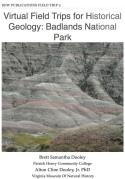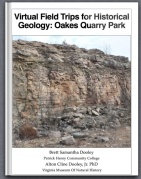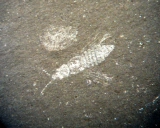 As a government-employed paleontologist, one aspect of my job is answer inquiries from the public about paleontology. This often includes identifying potential fossils, and that means the dreaded “dinosaur egg”.
As a government-employed paleontologist, one aspect of my job is answer inquiries from the public about paleontology. This often includes identifying potential fossils, and that means the dreaded “dinosaur egg”.
The vast majority of identification requests we get in Virginia turn out to not be fossils, although there are exceptions. About twice a month we get a request to confirm identity of a “dinosaur egg”. This is commonplace for professional paleontologists, and sometimes at conferences we’ll trade our favorite egg stories.
Not once in my career has it ever been a real dinosaur egg; they’re pretty much always eroded rocks from streams or concretions. But sometimes, even if they’re not eggs, they really look like they are.
My cousin Sheree Cline emailed these images to me over the weekend. This came from Botetourt County, possibly from the Devonian Millboro Shale. This is pretty clearly a concretion; besides the probable Devonian age and the relatively large size, it doesn’t seem to have any texture that would suggest a biological origin. The red staining suggests that it’s held together by iron-rich minerals precipitated from groundwater, also visible in the hole it left in the outcrop:
Besides the ovoid shape, the other thing that makes this concretion remarkably egg-like is that it’s hollow, although Sheree tells me that originally the concretion was filled with unconsolidated shale. All in all, it makes for the most egg-like concretion I’ve ever seen.
People are often embarrassed when they discover that what they thought was an egg turns out to be “just a rock”, but they shouldn’t be. The rocks and concretions are geologically interesting in their own right. Moreover, nature is replete with things that look like something they’re not, so it’s easy to misidentify something.
Thanks to Sheree for giving me permission to post these images. And please everyone, keep sending your identification requests; sometimes they really are significant fossils that may result in publications, and, one day, it might even be a real egg!












I get these a lot also. Other options are “turtle shell”, “turtle skull”, or “dinosaur brain.” We also get a lot of industrial slag that are “meteorites.”
We get those too. The “turtle skulls” are generally internal molds of bivalve shells. In this part of Virginia we also have a few exposures of iron-rich metamorphic rocks that had a mafic or ultramafic protoliths; those are usually the source of our “meteorites”.
We also get plenty of these in Oregon. I wrote a blog post starting a taxonomy of paleontology cranks, and dinosaur ‘eggs’ got a whole section.
http://blogs.uoregon.edu/4dbio/2013/05/25/a-taxonomy-of-paleontology-cranks/